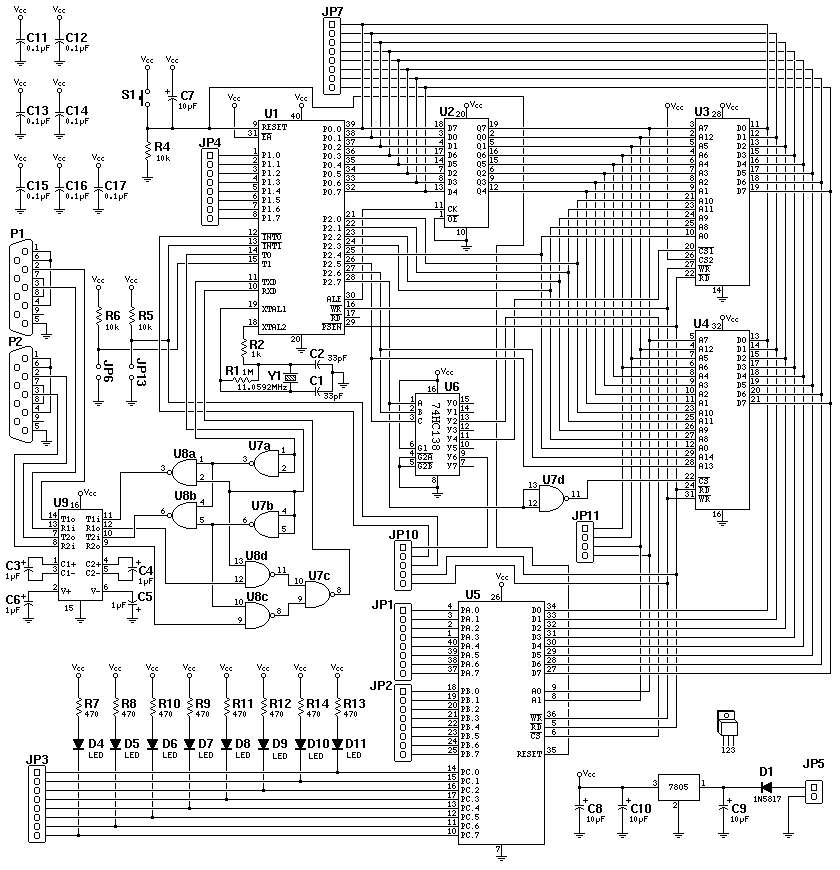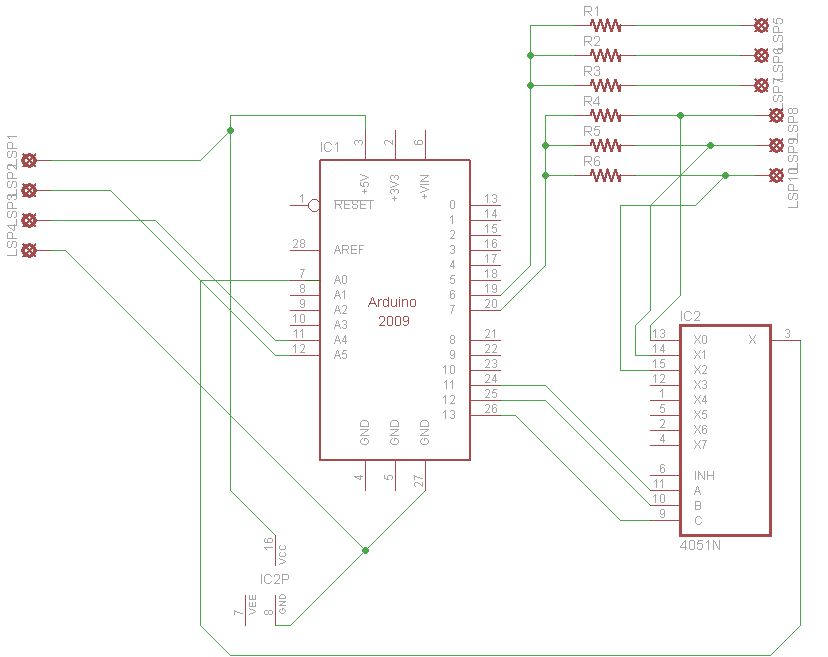
laser security system

A simple and affordable laser-based security system, costing less than Rs. 100. This circuit utilizes an LM358 operational amplifier and an LM555 timer. It is activated when the laser beam is interrupted by a light-dependent resistor (LDR), which triggers a connected buzzer. This system can be employed to safeguard valuable items, money, or rooms. By employing various mirror arrangements, different security configurations can be established. The described setup includes mirrors B, C, and D arranged to create a 90-degree angle with the incident beam, while mirror A directs the laser beam onto mirror B, which subsequently reflects the beam onto the LDR.
The laser-based security system operates on the principles of light interruption and amplification. The core components include the LM358 operational amplifier, which is configured as a comparator, and the LM555 timer, which functions as a timing circuit. When the laser beam, emitted from a laser diode, strikes the LDR, it causes a change in resistance. This change is detected by the LM358, which outputs a high signal when the LDR is illuminated and a low signal when the beam is interrupted.
In the proposed arrangement, mirrors are strategically placed to redirect the laser beam. Mirror A reflects the beam towards mirror B, which then directs it to mirror D. The angle of incidence and reflection is crucial; thus, mirrors B, C, and D must be positioned at precise angles to ensure the laser beam reaches the LDR when uninterrupted. If an intruder interrupts the beam by passing through the path, the LDR's resistance changes, triggering the LM358 to activate the LM555 timer, which then sounds the buzzer.
This system can be expanded to protect multiple objects by adjusting the mirror configurations. More mirrors can be added to create a more complex network of beams, enhancing the security coverage area. The simplicity of the circuit allows for easy assembly and modification, making it an ideal solution for various security applications. The cost-effectiveness and versatility of this laser-based security system make it suitable for personal use, such as securing homes, offices, or valuable possessions.A simple and cheap Laser Based Security System, which costs below Rs. 100. It is a simple circuit using LM358 OP-AMP and LM555 Timer. This circuit is triggered when the Laser beam falls on the LDR interrupts, which sounds the buzzer connected to it. This can be used to protect your valuable items, money, room etc. By using different mirror arrangements you can formdifferentsecurity systems. This can also be used to protect more than one objects by suitably arranging mirrors. One possible arrangement is shown below. In this arrangement Mirrors B, C, D are arranged such that the reflected beam is making 90 ° to incident beam and the Mirror A is placed such that the beam form Laser falls on the Mirror B and the beam from Mirror D falls on the LDR. 🔗 External reference
The laser-based security system operates on the principles of light interruption and amplification. The core components include the LM358 operational amplifier, which is configured as a comparator, and the LM555 timer, which functions as a timing circuit. When the laser beam, emitted from a laser diode, strikes the LDR, it causes a change in resistance. This change is detected by the LM358, which outputs a high signal when the LDR is illuminated and a low signal when the beam is interrupted.
In the proposed arrangement, mirrors are strategically placed to redirect the laser beam. Mirror A reflects the beam towards mirror B, which then directs it to mirror D. The angle of incidence and reflection is crucial; thus, mirrors B, C, and D must be positioned at precise angles to ensure the laser beam reaches the LDR when uninterrupted. If an intruder interrupts the beam by passing through the path, the LDR's resistance changes, triggering the LM358 to activate the LM555 timer, which then sounds the buzzer.
This system can be expanded to protect multiple objects by adjusting the mirror configurations. More mirrors can be added to create a more complex network of beams, enhancing the security coverage area. The simplicity of the circuit allows for easy assembly and modification, making it an ideal solution for various security applications. The cost-effectiveness and versatility of this laser-based security system make it suitable for personal use, such as securing homes, offices, or valuable possessions.A simple and cheap Laser Based Security System, which costs below Rs. 100. It is a simple circuit using LM358 OP-AMP and LM555 Timer. This circuit is triggered when the Laser beam falls on the LDR interrupts, which sounds the buzzer connected to it. This can be used to protect your valuable items, money, room etc. By using different mirror arrangements you can formdifferentsecurity systems. This can also be used to protect more than one objects by suitably arranging mirrors. One possible arrangement is shown below. In this arrangement Mirrors B, C, D are arranged such that the reflected beam is making 90 ° to incident beam and the Mirror A is placed such that the beam form Laser falls on the Mirror B and the beam from Mirror D falls on the LDR. 🔗 External reference





